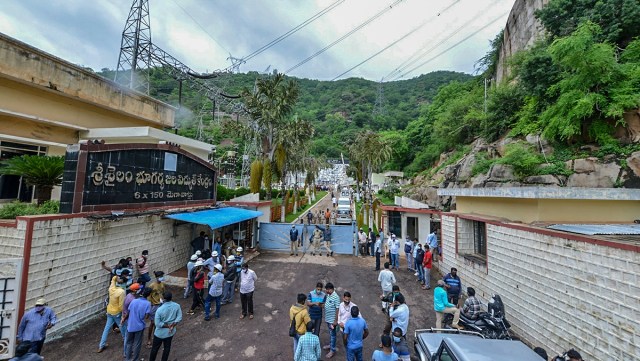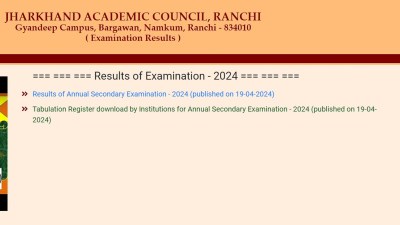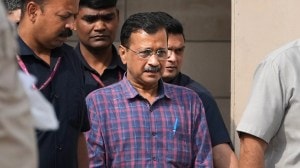- India
- International
Telangana powerhouse fire: Red flags raised over dam’s poor upkeep, funds crunch in 2 states
The poor financial situation of utilities also typically translates into illegular maintenance and upkeep of other parts of the power plant.
 Police and locals gather outside Srisailam Left Bank Power Station (SLBP) after a fire broke out on Thursday night, at Srisailam in Kurnool district, Friday, Aug. 21, 2020. (PTI Photo)
Police and locals gather outside Srisailam Left Bank Power Station (SLBP) after a fire broke out on Thursday night, at Srisailam in Kurnool district, Friday, Aug. 21, 2020. (PTI Photo)The fire in the underground hydroelectric power station on the left bank of the Srisailam dam came after multiple red flags were raised about the poor maintenance of accompanying structures, including the structural integrity of the dam itself, on which the plant is built.
A deepening plunge pool — created by erosion of the natural river bed downstream of the dam due to heavy spillage of flood waters — at a distance of about 100 metres from the spillway has been flagged as a potential threat to the dam’s long-term safety, even as the cash-strapped state power utilities of both Telangana and Andhra Pradesh have done little over the years to address safety issues.
The poor financial situation of utilities also typically translates into illegular maintenance and upkeep of other parts of the power plant.
 A deepening plunge pool at a distance of about 100 metres from the spillway has been flagged as a potential threat to the dam’s long-term safety. (PTI Photo)
A deepening plunge pool at a distance of about 100 metres from the spillway has been flagged as a potential threat to the dam’s long-term safety. (PTI Photo)
The foundation of the dam could be threatened if the plunging pool of over 150 feet were to erode in the direction of the dam – that would require the structure to be repaired and reinforced.
The issue of the damage to the plunge pool and the downstream apron — layers of mesh grid covered with high-strength concrete — was flagged at the 39th meeting of the National Committee on Dam Safety (NCDS) in Bhubaneswar in February 2019. A panel of experts on dam safety is learnt to have expressed concern over “the erosion of plunge pool located opposite fourth to sixteenth blocks” on the natural course of the river, and entrusted the National Institute of Oceanography (NIO), Goa, with carrying out underwater videography.

It is learnt that the NIO’s studies – a bathymetric survey to measure the depth of the water body and map its underwater features, together with teams of divers with underwater cameras filming the insides of the plunge pool – suggested a possible creep of the plunge pool towards the dam.
In addition, the NCDS asked the National Institute of Hydrology (NIH), Roorkee, to prepare an emergency action plan (EAP) and a dam break analysis, alongwith inundation maps – which indicates that the panel viewed the structural problems seriously.
However, not much has been done to address these concerns since, officials in the Central Electricity Authority (CEA) said, and indicated that over Rs 50 crore would be needed to take up works to arrest the spread of the plunge pool both towards and away from the dam. The CEA is the agency that issues clearances to large-sized hydro projects in the country.
The Srisailam dam straddles the river Krishna in a deep gorge on the border of Telangana’s Mahabubnagar district and Andhra Pradesh’s Kurnool district. The reservoir of the dam sprawls over 616 sq km, and there are two power plants on either side of the dam.
The left bank underground station, where the accident happened, is on the Telangana side. It has 900MW installed capacity for pumped-storage operation; the right bank underground power station, with a capacity of 770MW, is on the Andhra side.
The power utilities in both states are in poor financial condition. Losses incurred by the discoms in Telangana and Andhra Pradesh more than doubled during the first half of FY’19 on a year-on-year basis, according to a Power Ministry report, with cascading impact on upstream generating companies such as the ones operating the Srisailam plants.
The outstanding dues of electricity generating firms had increased 21 per cent annually to Rs 40,580 crore during H1FY19, with Telangana and Andhra Pradesh coming in third and fourth in the list of discoms ranked by outstandings to generating utilities.
There have been requests that the Union government should rope in the Central Water Commission to address the plunge pool issue using the World Bank’s DRIP (Dam Rehabilitation and Improvement Project) funds.s
Apr 19: Latest News
- 01
- 02
- 03
- 04
- 05






































